Hearing, together with its active component, listening, is a means by which we sense the events of life, aurally visualize spatial geometry, propagate cultural symbols, stimulate emotions, communicate aural information, experience the movement of time, build social relationships, and retain the memory of experiences
Barry Blesser and Linda-Ruth Salter, Spaces Speak
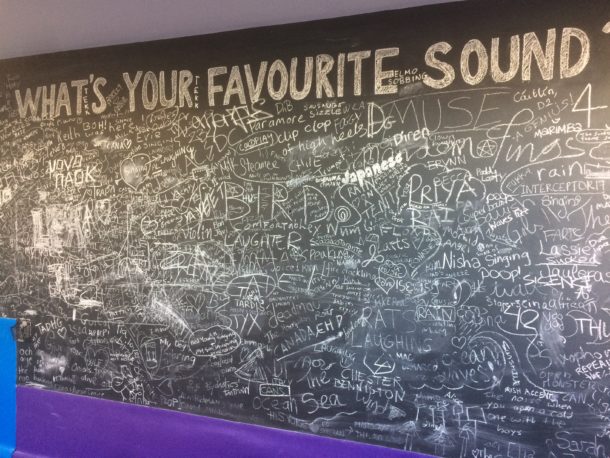
These were among the (hidden) motives underlying the V&A commission to viol player Liam Byrne, as part of the REVEAL Festival in June, for a new sound installation inaugurating the Sainsbury Gallery.
In the course of my VARI Professorship, I suggested this commission and followed the creative process of the artist, in a constant dialogue on the whereabouts of the work. Presented during 10 days, this 8-hour long recorded work for four speakers, entitled Partials, is ‘an exploration of the sonic elements that make up musical notes’.
In creating this installation, Byrne has deconstructed the sound of his instrument and spread the various elements throughout the gallery. Lowering down the pitch of the instrument has allowed to create a large and constantly-evolving harmonic spectrum that felt like electronic music, yet one could feel the physicality of the instrument, the movement of the bow on the strings, or the fingers on the fingerboard.
Projecting the sound from four different angles of the 1,100 sq m2 brand-new gallery and creating a dialogue with Simon Heijdens’ visual work set in the Oculus, was another challenge. How to be present, how to give the feel of the space without being overwhelming?
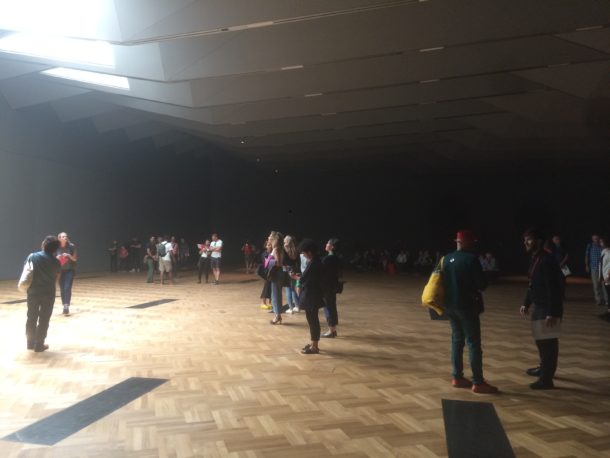
Byrne, a former artist-in-residence at the V&A, who has previously worked on a soundwork at the Dulwich Picture Gallery, understands well the possibilities and challenges of sound in museums : a gallery is not a concert hall and the artist has to take into account other types of attitudes from the listener.
Byrne’s work raises the question – which is central in my current research on sound in museums and sound-producing objects in museum collections – on how the physical and emotional reactions that sound inevitably sparks do affect museum visitors.
Blesser and Salter’s classic but still fascinating book on Aural Architecture describes how sound can be a way of perceiving architecture in a very different manner that viewing it. This is precisely what Partials was about. How then does sound enhance, transform – and sometimes harm – the visitor’s experience? In this particular case, that of an empty exhibition space, it was the perception of space and architecture that was central. In other cases, such as the highly immersive environments created in ground-breaking exhibitions such as David Bowie, Revolutions and Pink Floyd, sound deepens our understanding of the exhibits and creates another sensorial time-frame which helps us to relate them one with each other.
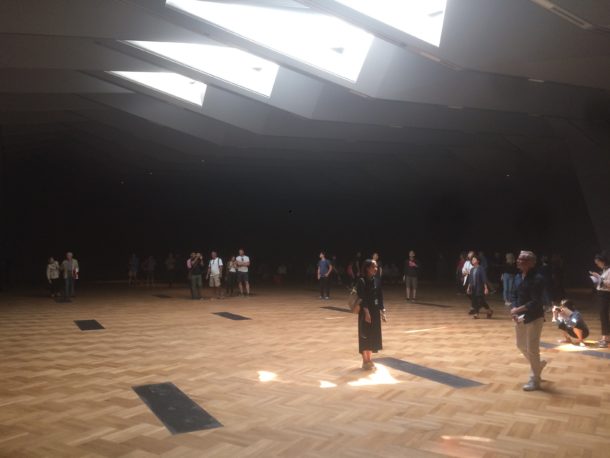
The subject of sound in exhibitions has only been recently studied and we still need to draw the conclusions from the relatively limited number of surveys that have been made available. But as sound is becoming overwhelmingly present in our everyday life – thanks to digital and portable technology – its presence in museums becomes also more noticeable, whether it’s in (especially modern and contemporary) art museums, science museums or institutions which, as the V&A, have a specific relation to music through their collections, exhibitions and events.
And as an example of a recent exhibition on sound: SOUND CHECK, Science Gallery, Trinity College, Dublin, 9 June – 24 September, 2017
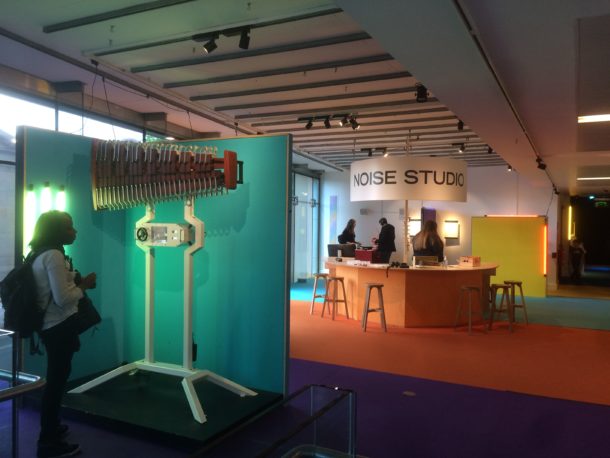
Acknowledging the fusion between music and technology, this exhibition is meant to be practical and hands-on : the public is encouraged to interact with most of the exhibits, producing sounds with the usual means of singing in a microphone, hitting keys or strings or turning buttons on a synthesizer… But also by playing on a giant pinball-machine with guitar strings attached (Star-Shaped Bass Guitar Pinball, Lucas Abela), or cycling to generate electronic sound (A Synth on a Bike, Sam Battle) or dancing with long strings (Pull Strings, Move Hands, Make Music, Enda Bates)…Arty objects, such as sound-producing shoes (by Alexandra Murray-Leslie, from the band Chicks on Speed), the Mi.mu musical gloves or a giant music box by Brenda Hutchinson where also featured. Scientific rarities such as an Uranium-controlled Mechanical Xylophone or virtual instruments produced by Physical Model Synthesis open new paths both in composition as in instrumental design.
Inside the exhibition, a maker’s workshop allows every visitor to build his/her own instrument, whether acoustic or electronic. This exhibition thus forces the visitor to be active and to experience in a very concrete way not only how to produce sounds but also how use these sounds as building-blocks for sonic constructions. Of course, the musical results were not all equally interesting.
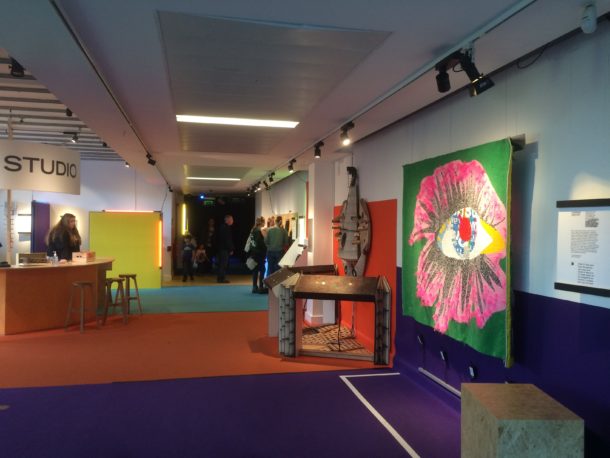
Probably the most striking parts of the exhibition lie in all the activities it helped to create: makers workshops, concerts, educational projects with local communities, etc… It raises the question of the balance between the exhibition as artistic project, as tool for understanding scientific issues and as experiential hands-on situation. The Science Gallery isn’t of course an art museum and has other objectives as, let’s say, the V&A… But we do share a common and strongly rooted interest for education which lies at the heart of our missions…we could therefore learn from some of their practical approaches. The success of the exhibition, especially towards teenagers and college students, is a sign that somehow they hit a chord!
Eric De Visscher is an Andrew W. Mellon Visiting Professor with the V&A Research Institute.
For more information on our Visiting Professorships, please visit the VARI webpages.
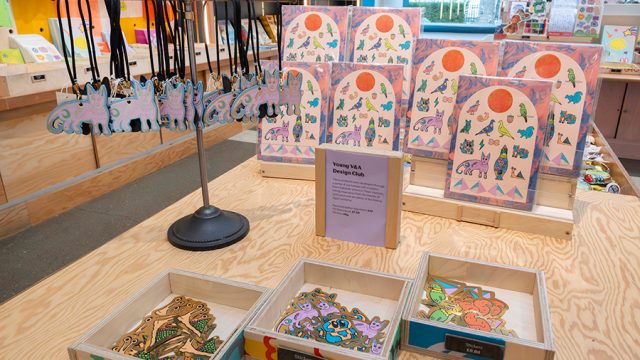
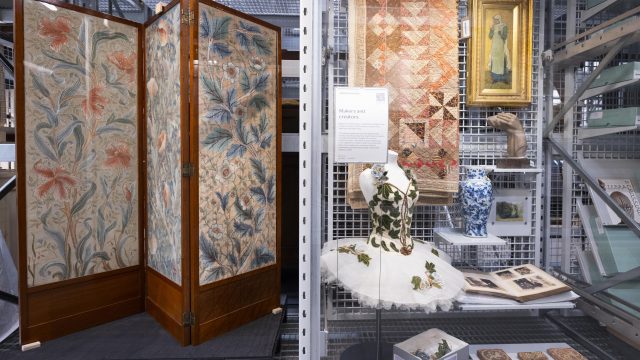

Its sounds awesome to hear it played by Visscher its ming pleasing and very interesting. Nice to be at the time on the same place. I experienced the most
Great to hear! Thank you :-D